This article is a brief overview of the Stena E-Flexer class of Ro-Pax vessels. A more in-depth look at the class with archived updates is available here. Unlike the in-depth look, this page is designed for mobile browsers.
Update September 2022: This page is in the process of being updated and rewritten to reflect the most recent developments, including the orders for three hybrid E-Flexer vessels. The information contained below this paragraph was last updated on 16 January, 2020. Please see the individual STENA ESTRID, STENA EDDA, GALICIA, STENA EMBLA, CÔTE D’OPALE, SALAMANCA, and STENA ESTELLE & STENA EBBA pages for more information on the first eight vessels delivered.
Stena E-Flexer Class Fast Facts
| Current Name: Stena E-Flexer Class | Previous Names: STENA ESTRID / STENA EDDA / GALICIA / STENA EMBLA / CÔTE D' OPALE / SALAMANCA / Stena E-Flexer 7 / Stena E-Flexer 8 / SANTOÑA |
| Shipyard: AVIC Weihai [CN] #W0263 / #W0264 / #W0265 /#W0266 / #W0267 / #W0268 / #W0269 /#W0270 / #W0271 (exact allocation to each unit to be confirmed), | IMO Number: 9807293 / 9807308 / 9807310 / 9807322 / 9856189 / 9858321 / 9862994 / 9863003 / - / - (exact allocation to each unit to be confirmed) |
| Current Operator: Stena Line / Brittany Ferries / DFDS | Current Route: Various |
| Length Overall: | Beam: |
| Passenger Capacity: 930 - 1100 | Vehicle Capacity: 3,100 lane metres of freight (plus up to 120 cars on a their own dedicated deck) / 3,600 lane metres of freight (plus passenger cars on a their own dedicated deck) |
| Tonnage: | Sister-ships: N/A |
Table of Contents
What is Stena E-Flexer?
The Stena E-Flexer class is a series of up to 11 new passenger and vehicle RoPax ferries ordered by Stena RoRo from the AVIC Weihai shipyard in China. The series is designed to have class-leading efficiency, and features a new unique hull shape developed specifically for Stena RoRo by Deltamarin. The bow is shaped to reduce resistance including around the openings for the thrusters, and the stern shaped to reduce wave making.
As well as being efficient, E-Flexer is designed with a high capacity and can carry up to 50% more vehicles than standard RoPax vessels at the time it was designed. The first vessel in the series, STENA ESTRID, was delivered on November 15, 2019. Vessel number two, STENA EDDA, was delivered exactly 2 months later five days ahead of schedule.
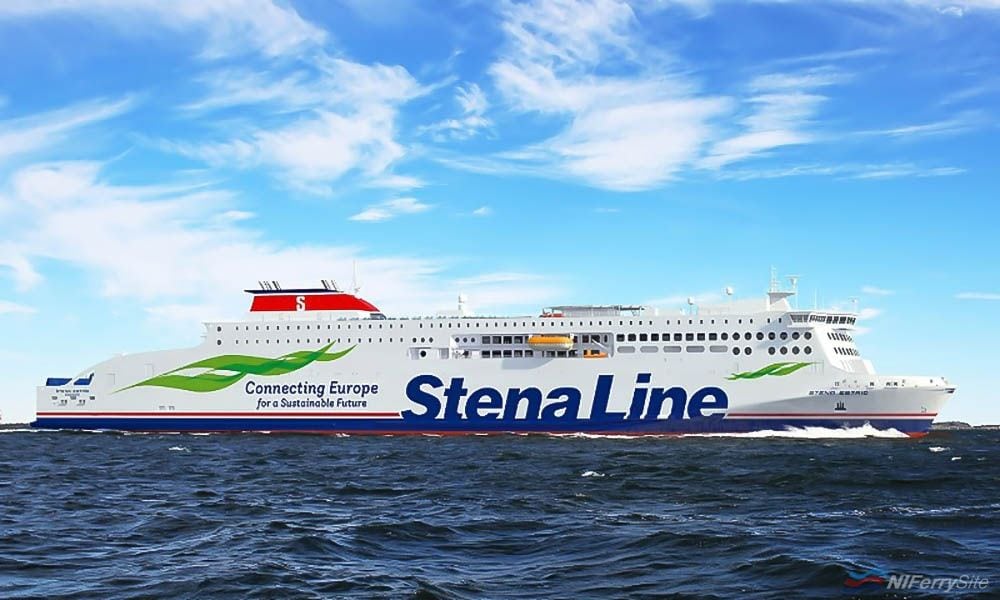
At speeds of 18 knots and below each vessel is able to run on just one of its two propellers with one engine. The other propeller is feathered in order to minimise resistance through the water. To date, a total of nine confirmed orders have been placed for E-Flexer vessels, built to six different designs for three different operators.

On Tuesday, November 27th Stena Line announced that all three Stena Line vessels destined for Irish Sea services were under construction. The first vessel, STENA ESTRID, was floated on January 16th 2019. The second vessel, STENA EDDA, was floated out on
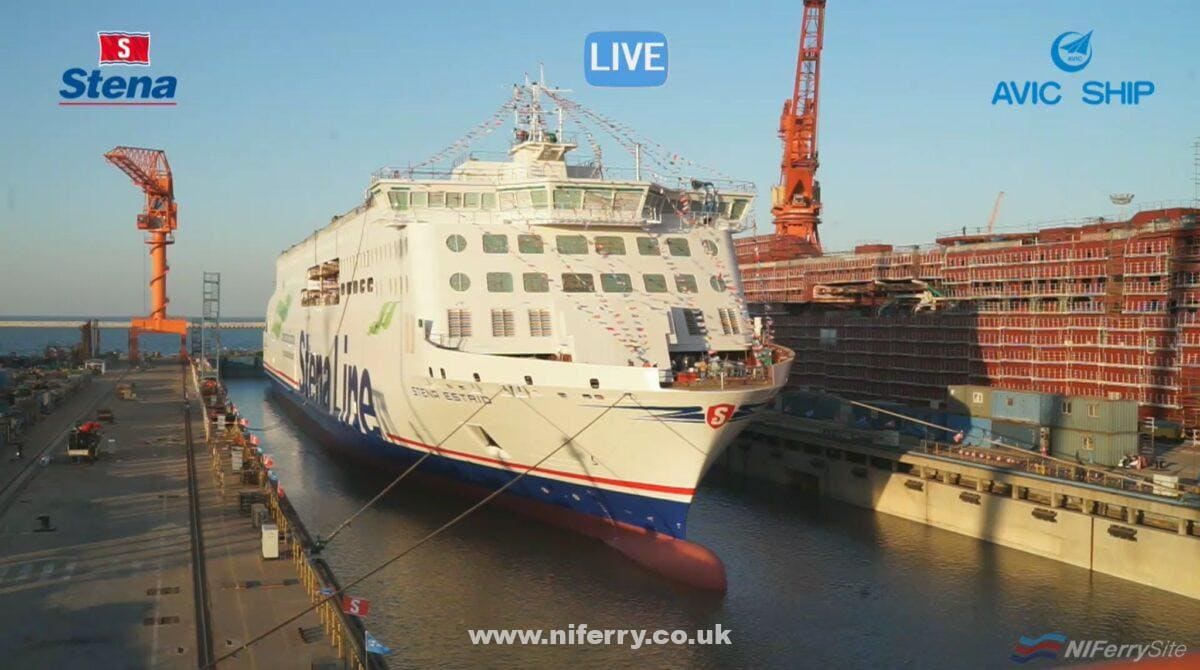
What does the name E-Flexer mean?
The name E-Flexer was chosen to reflect two of the main goals of the design – efficiency and flexibility. The ships are designed to be some of the most fuel efficient in the world for their size, while also being flexible enough to operate across a number of different routes of varying distances.
This flexibility has been reflected in the routes the vessels have been ordered from have been allocated to. At present these range from the 90 minute Dover to Calais crossing to the 23 hour plus Portsmouth to Spain routes of Brittany Ferries.
STENA EDDA is the first of two new E-Flexer ferries for the Belfast to Liverpool route and arrived during 2020. The second, STENA EMBLA, is expected to enter service during 2021. She arrived in Belfast for the first time on Saturday January 2, 2021.
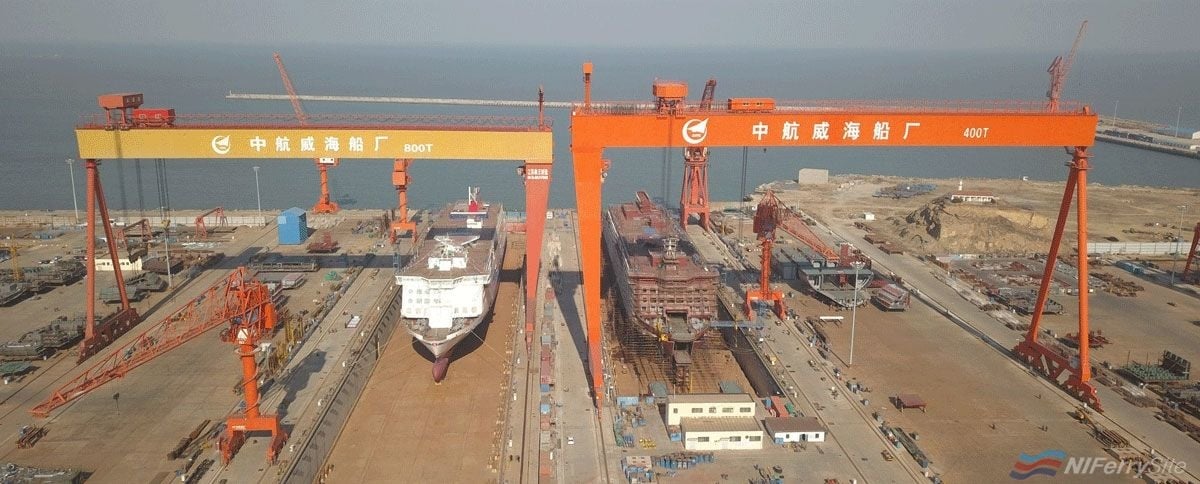
Update 08.09.19: STENA ESTRID appears to have started sea trials last week. She is understood to be at an advanced stage of fitting out.
How are they So Efficient?
Deltamarin has designed a special new hull form for the E-Flexer project which is designed to minimise drag. In addition to an optimised bulb design, the thruster openings are shaped to reduce drag and the stern shaped to minimise wave making. This new hull form has been tested significantly, both with physical models in a water tank, and using computer modelling. It has been found to be “best in class”.
Rather than using four main engines to propel the vessel, E-Flexer will use just two due to its lower power requirement. Not only does this mean less fuel is used to fuel the engines but it also means there is a lot less weight to be carried.
The propellers are designed to be feathered to reduce resistance at lower speeds, meaning at speeds under 18 knots the ship can sail using just one propeller. The hulls themselves are painted with paint incorporating the bio-repellent antifouling ingredient Selektope to reduce the buildup of drag from marine life attaching itself to the hull.
We-Tech are providing their WE-Drive permanent magnet shaft generators and a power distribution system to efficiently supply power across the vessel and to its bow thrusters. All lighting will be provided by LED’s in order to reduce energy consumption, and the glazing will have solar film applied in order to reduce the need for air conditioning and heating.
Examples ordered to date
A total of 9 vessels have been confirmed as ordered for 3 different operators to date. At the time of writing (July 19) there are a total of six distinct variations of E-Flexer, taking into account the different requirements of Stena RoRo, Stena Line (with whom the original concept was closely developed), Brittany Ferries, and DFDS. Although E-Flexer is a single design concept, there are actually at total of six (and counting) distinct variations of the design ordered. While the majority of the vessels are being built to Ice Class 1C standards, one will be built to 1A standards, for example.
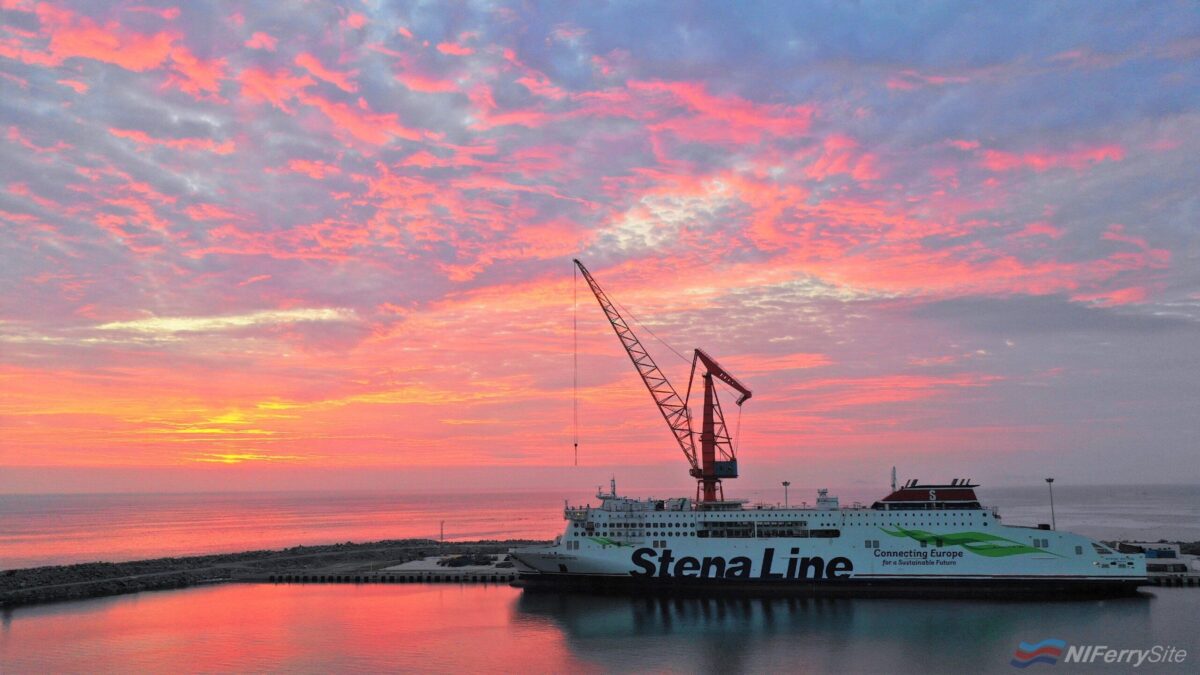
Stena Line
Stena RoRo’s sister company Stena Line has taken delivery of three examples for Irish Sea routes. An additional two lengthened examples have been ordered for or an as yet unconfirmed market. (Update 27.09.21: Stena Line has confirmed that these Mk II E-Flexers will be allocated to Nynäsham – Ventspils). The first Stena Line E-Flexer, STENA ESTRID, entered service on the Dublin – Holyhead route in January 2020. The second, STENA EDDA, joined the Belfast – Liverpool route later the same year. The third vessel for Stena Line, STENA EMBLA arrived in Belfast on January 2, 2021. She will join the Belfast to Liverpool link in place of STENA MERSEY.
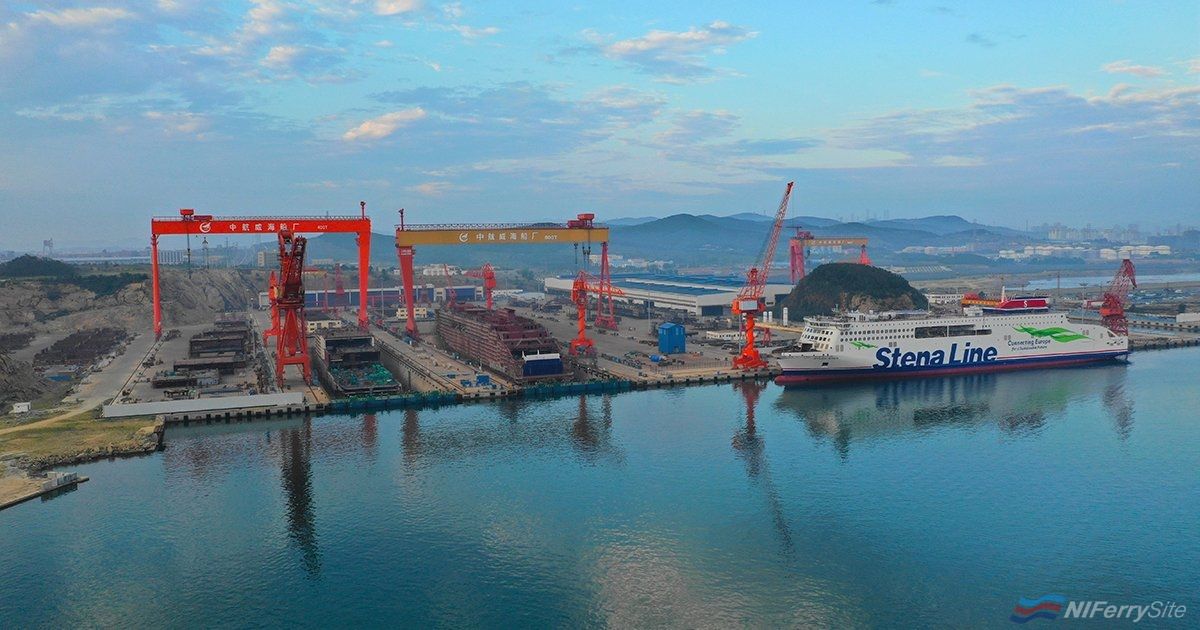
Brittany Ferries
French operator Brittany Ferries will receive three of the new ferries on long-term charter. The first two examples, one LNG powered and the other not, are to be deployed on long-haul services between England and Spain. These will be named GALICIA and SALAMANCA respectively.
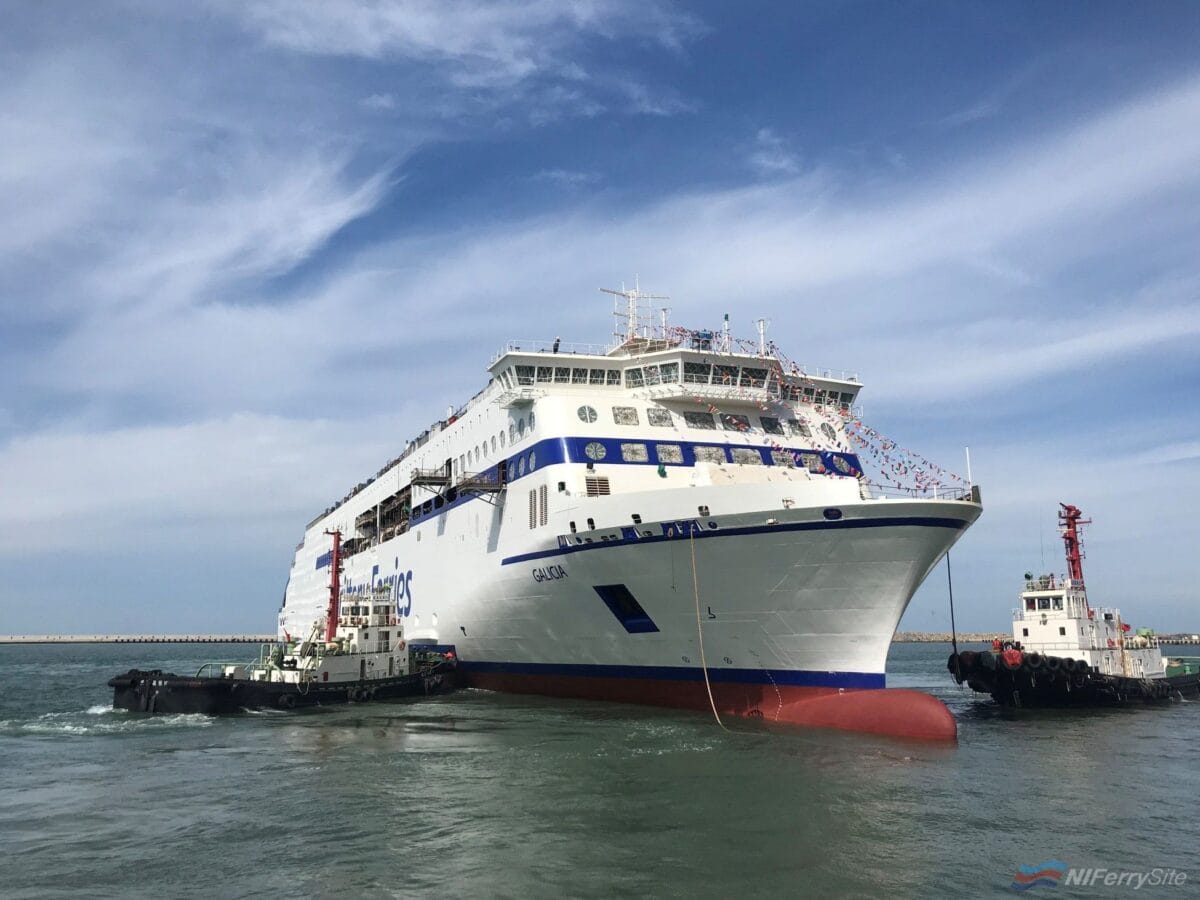
The Brittany Ferries vessels are unique in not having the separate vehicle space for passenger cars. Instead, this space is given over to increasing cabin capacity. The superstructure on deck’s 7 and 8 is also extended aft slightly, again to increase cabin capacity.
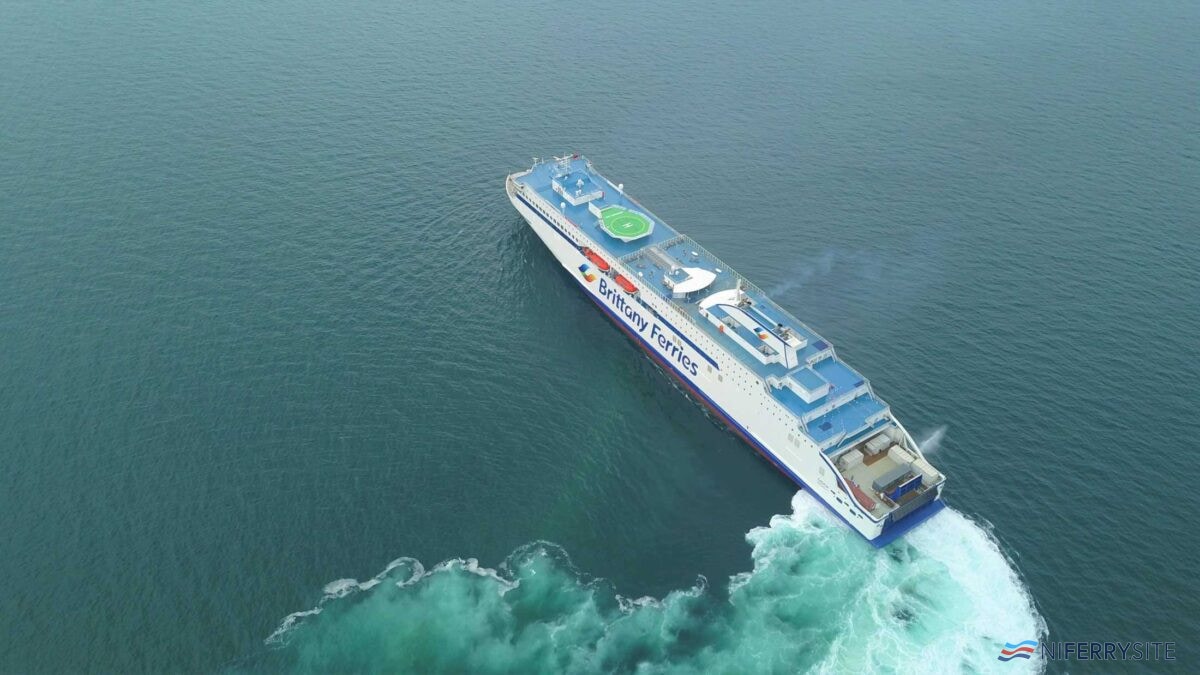
The remaining Brittany Ferries example, SANTOÑA, was announced on March 25, 2019 and will also be powered by LNG. Brittany Ferries has not yet been specified which market she is for but her name suggest she will also serve mainly Spanish routes.
DFDS
A single E-Flexer with a heavily modified design, CÔTE D’ OPALE, has been ordered for DFDS and is expected to operate between Dover and Calais. In addition to heavily modified bow and stern loading arrangements to ensure she is compatible with the berths at Dover and Calais, CÔTE D’ OPALE will also be equipped with an additional bow thruster.

As a consequence of being designed for such a short route, CÔTE D’ OPALE features a revised superstructure with no passenger cabins.

CÔTE D’ OPALE was delivered at Weihai on May 24, 2021, some six weeks ahead of the contract date. The ship is being brought to Europe by a Northern Marine (Stena) crew. A number of DFDS officers are also onboard. As with the other E-Flexer ferries, CÔTE D’ OPALE will transit the Suez Canal.
Options
All options from the original contract signed between Stena and AVIC in 2016 have now been exercised, though Stena confirmed that they now have an additional four options to exercise when the order for the two lengthened examples for Stena Line was announced in July 2018. In Stena’s 2018 annual review, however, it was stated that there are only three options, though one of these has subsequently been exercised as a third vessel (SANTOÑA) for Brittany Ferries. There have been suggestions that Stena have discussed extending the series beyond 11 units, however.
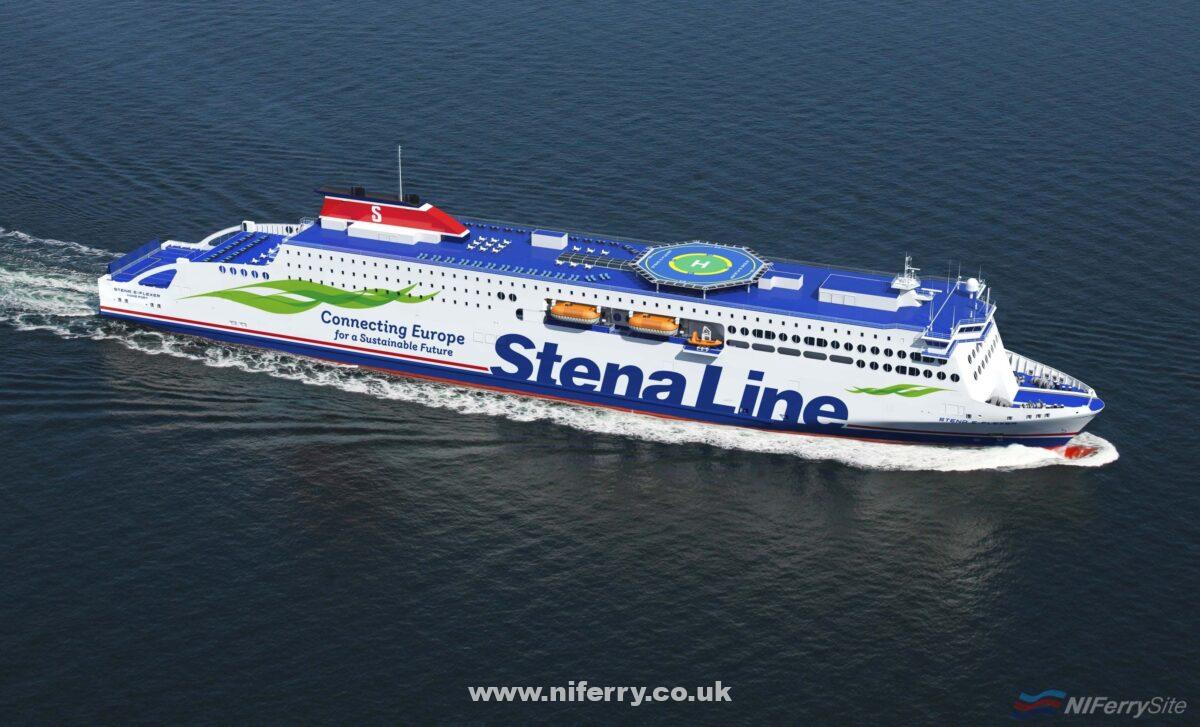
Stena E-Flexer names, planned routes, and Rough delivery dates
| Nr | Yard No | Operator | Estimated delivery | Planned Route | Name |
| 1 | W0263 |  | November 15, 2019 | Holyhead – Dublin * (from mid-January 2020) | STENA ESTRID |
| 2 | W0264 |  | Spring 2020 | Belfast – Liverpool (Birkenhead) * | STENA EDDA |
| 3 | W0267 | Autumn 2020 | Portsmouth – Le Havre | GALICIA | |
| 4 | W0266 |  | Early 2021 | Belfast – Liverpool (Birkenhead) * | STENA EMBLA |
| 5 | W0268 |  | Summer 2021 | Dover – Calais (Replacing CALAIS SEAWAYS (external link)) | CÔTE D’OPALE |
| 6 | W0269 | Autumn 2021 | Portsmouth – Bilbao/Santander (Replacing CAP FINISTERE (external link)) | SALAMANCA | |
| 7 | W0270 ^ |  | 2022 | Nynäshamn – Ventspils? | STENA TBA |
| 8 | W0271 ^ |  | 2022 | Nynäshamn – Ventspils? | STENA TBA |
| 9 | W0272 | 2023 | GB – Spain | SANTOÑA |
^ #7 & #8 announced on 18.07.18. These are a 239.7m long extended version with 3600lm and 263 cabins. SALAMANCA will be LNG powered and has a smaller vehicle deck capacity of 2,758 lm in order to accommodate this, as will the third Brittany Ferries E-Flexer SANTOÑA confirmed on 26.03.19. All dates are subject to change.

Contractors Involved
The first six vessels ordered will be 214.5m long and have the capacity for up to 1000 people and up to 3100 lane metres of freight. The following two examples will be 239.7m long with capacity for 1200 people and 3600lm of freight.
Suppliers from Europe are heavily involved in the project, even though the vessels are being built in China. Germany’s Reinhold & Mahla (R&M) are responsible for the interior outfitting, with Sweden’s Figura Arkitekter responsible for the interior design on behalf of the
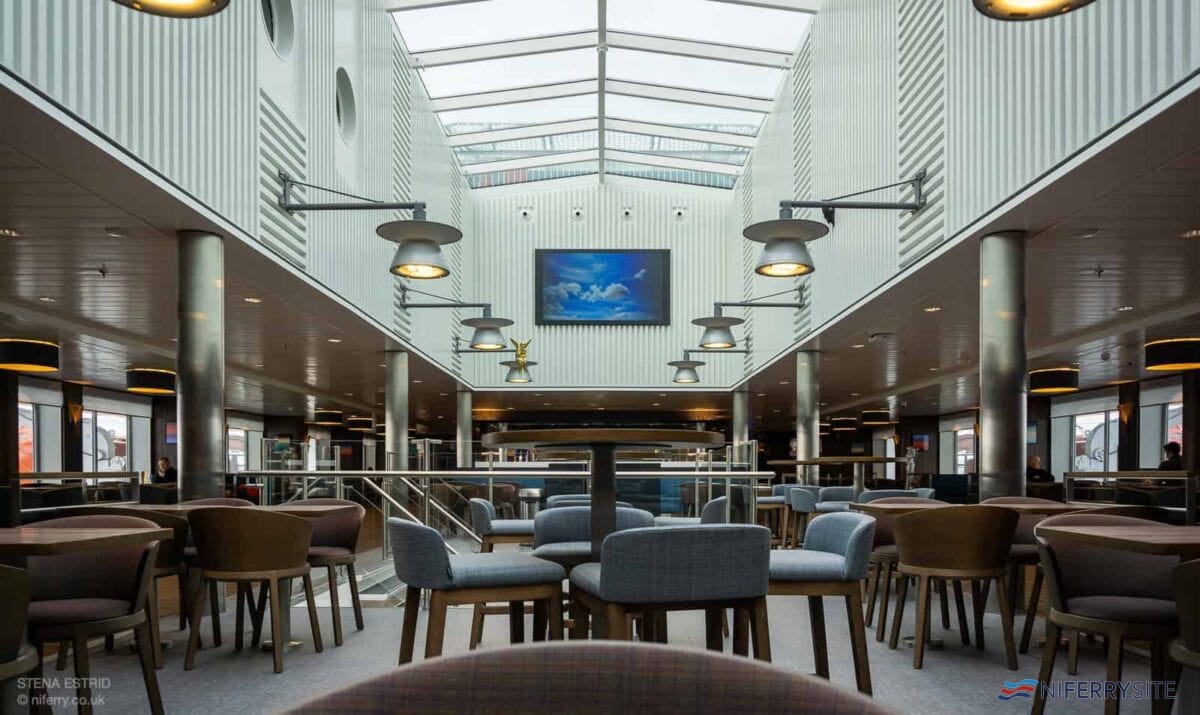
Caterpillar Marine is supplying the propulsion package via their Scandinavian dealer Pon Power, while the glazing is being shipped from Saint-Gobain in France. During late-July/August 2019 the majority ownership of AVIC Wehai transferred from AVIC Ship to fellow Chinese state-controlled concern China Merchants.
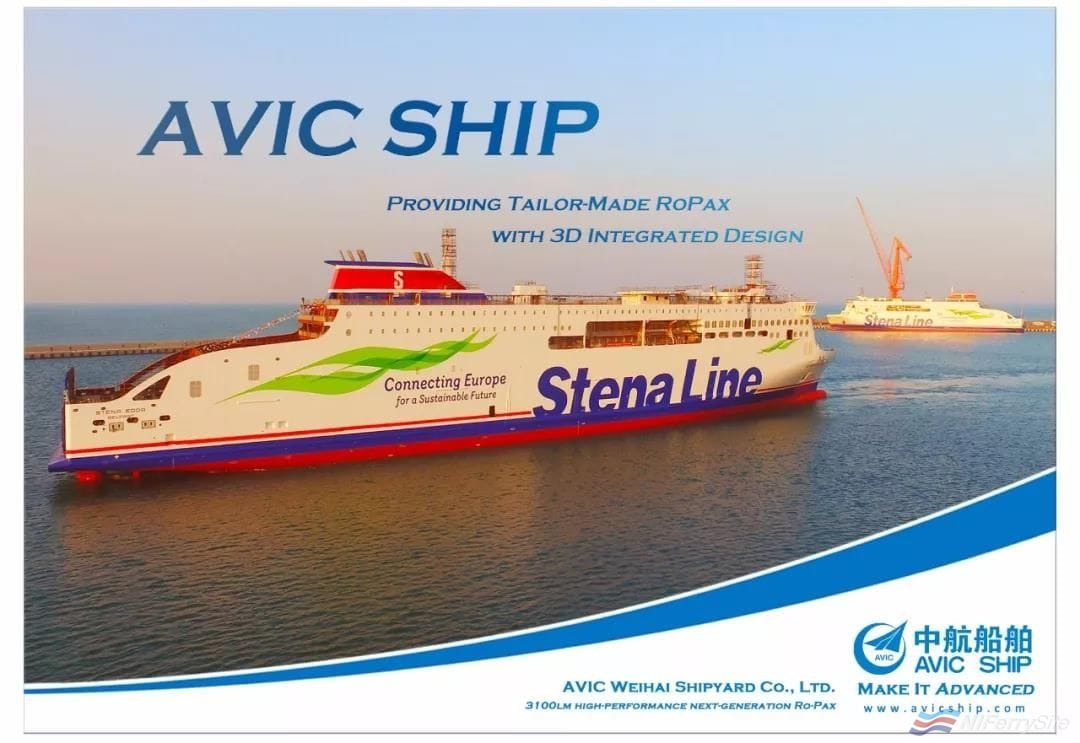
Brittany Ferries have said they will be engaging Spanish architects to customise the passenger spaces of their vessels and DFDS are working on their own layout for their unique vessel. Figura remains the lead “consulting” interior architect on all vessels with their services included in the package provided by Stena RoRo as part of the contracts with Brittany Ferries and DFDS.
The latest confirmed example, Brittany Ferries SANTOÑA, will also be 214.5m long. All three operators are expected to make extensive use of digital technology in the passenger spaces onboard.
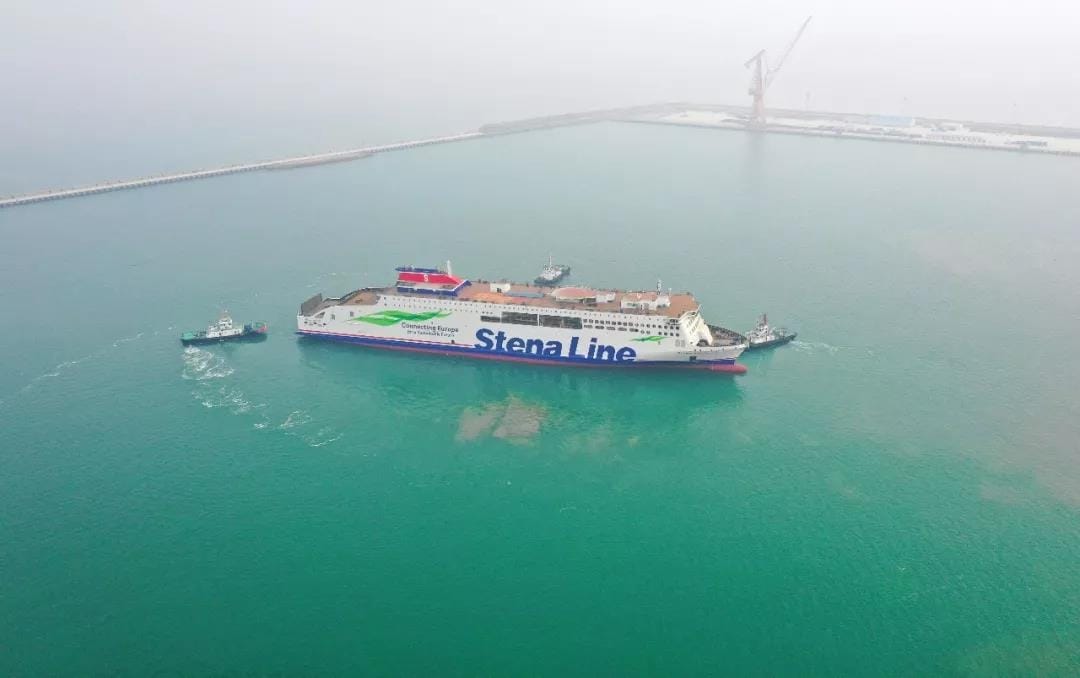
Differing Configurations
Stena RoRo themselves and Finland’s Deltamarin are supervising and project managing the E-Flexer project, while Deltamarin is also the consulting naval architect.
The original E-Flexer design which will be used by Stena Line has 175 cabins. This has been increased to around 300 (plus 36 freight driver cabins) on the Brittany Ferries examples by replacing the dedicated car deck on deck 7 with passenger spaces, and extending both deck 7 and 8 aft. The lengthened Stena Line examples are to have 263 cabins and a larger dedicated car deck for up to 200 vehicles.
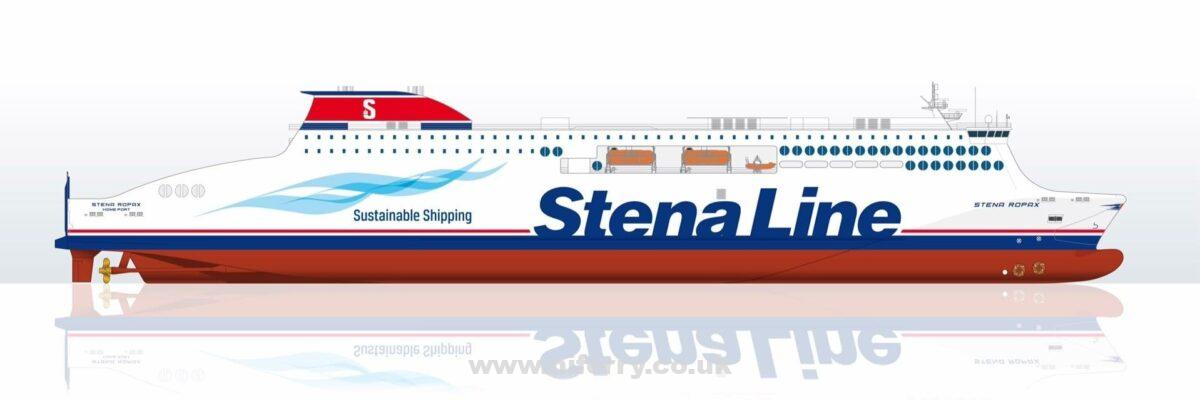
DFDS’s COTE D’OPALE will not have any passenger cabins due to the short nature of the 90 minute Dover – Calais crossing she is being built for. The spaces which contain cabins on the other E-Flexers given over to public spaces instead, and the 120 car capacity car deck on deck 7 retained.

Brittany Ferries SALAMANCA and SANTOÑA will have reduced vehicle deck capacity of 2,758lm in order to accommodate extra equipment needed for LNG operation on deck 1, including the fuel tanks. Another key change is to the main engines. These will be supplied by Wartsila (as with HONFLEUR) rather than by Caterpillar.
All E-Flexer ferries will be built to at least Ice Class 1C standards. While not required in the waters in which the vessels will initially operate, this will increase the options for future deployment of the new ships. STENA EMBLA is to be built to Ice Class 1A.

Deployment Information
On 8/06/18 Stena Line confirmed which routes their first three E-Flexer class vessels will be deployed on. E-Flexer #1 (STENA ESTRID) will go to the Holyhead – Dublin route (in place of STENA SUPERFAST X) and #2 (STENA EDDA) and #4 (STENA EMBLA) will go to the Belfast to Birkenhead route.
Brittany Ferries will deploy their first two examples (GALICIA and SALAMANCA) on the Portsmouth – Le Havre and Portsmouth – Bilbao/Santander routes, but have not yet announced where they intend to operate the third example.
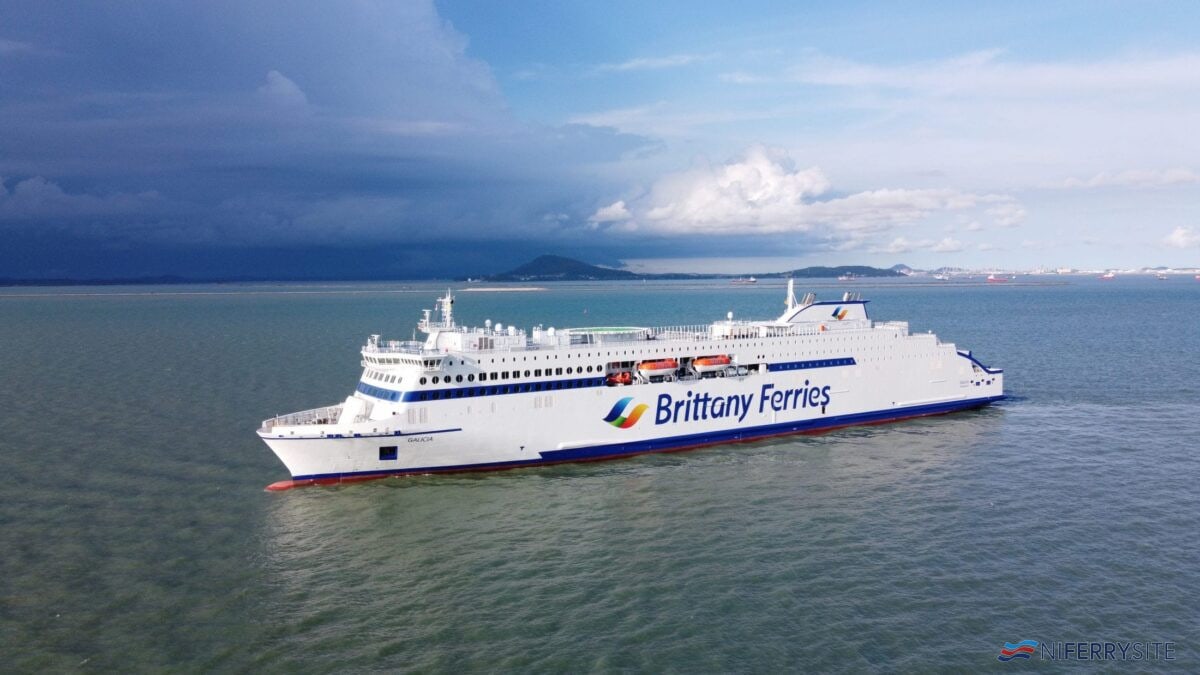
DFDS have stated they intend to deploy CÔTE D’OPALE on their Dover – Calais route, but have also stated that they will finalise deployment during 2020 according to market conditions.
Stena has yet to announce where they intend for their lengthened examples to operate with online speculation suggesting Karlskrona – Gdynia, Nynäshamn – Ventspils, and even Holyhead to Dublin (replacing both STENA ADVENTURER and STENA ESTRID). The increased cabin accommodation suggests that they will probably be deployed on an overnight service,
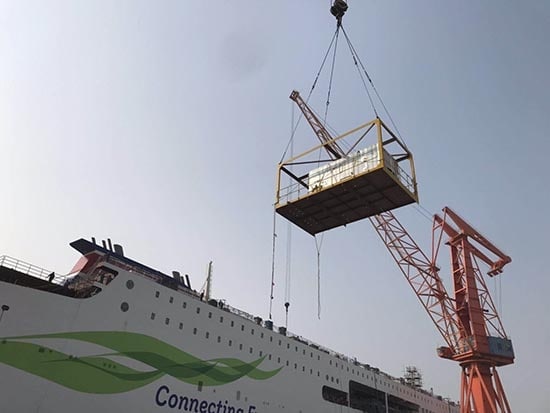
Key E-Flexer technical information
A more detailed technical specification of the individual vessels is available on the main Stena E-Flexer page here.

| Class | Stena E-Flexer Mk I (standard – 215m) | Stena E-Flexer Mk II (lengthened – 240m) |
| Design | Stena AB / Deltamarin | Stena AB / Deltamarin |
| Construction Yard | AVIC Weihai, Shandong Province, China | AVIC Weihai, Shandong Province, China |
| Vessel Owner | Stena RoRo | Stena RoRo |
| Vessel Operators | Stena Line (3), Brittany Ferries (3), DFDS (1) | Stena Line (2) |
| Delivery | Late 2019 – 2023 | 2022 |
| Length | 214.5m | 239.7m |
| Breadth | 27.8m | 27.8m |
| Draught | 6.4m | 6.4m |
| Gross Tonnage | Approx 40,500 | Approx 45,000 |
| Total number of decks | 10 | 10 |
| Number of passenger decks | 3 | 3 |
| Design Speed | 22 knots | 22 knots (?) |
| Approx. Passenger Capacity (including crew) | 1000 | 1200 |
| Freight Capacity | 3100 lane metres* | 3600 lane metres |
| Capacity of dedicated passenger vehicle and small van deck (not included on the Brittany Ferries examples) | 120 | 200 |
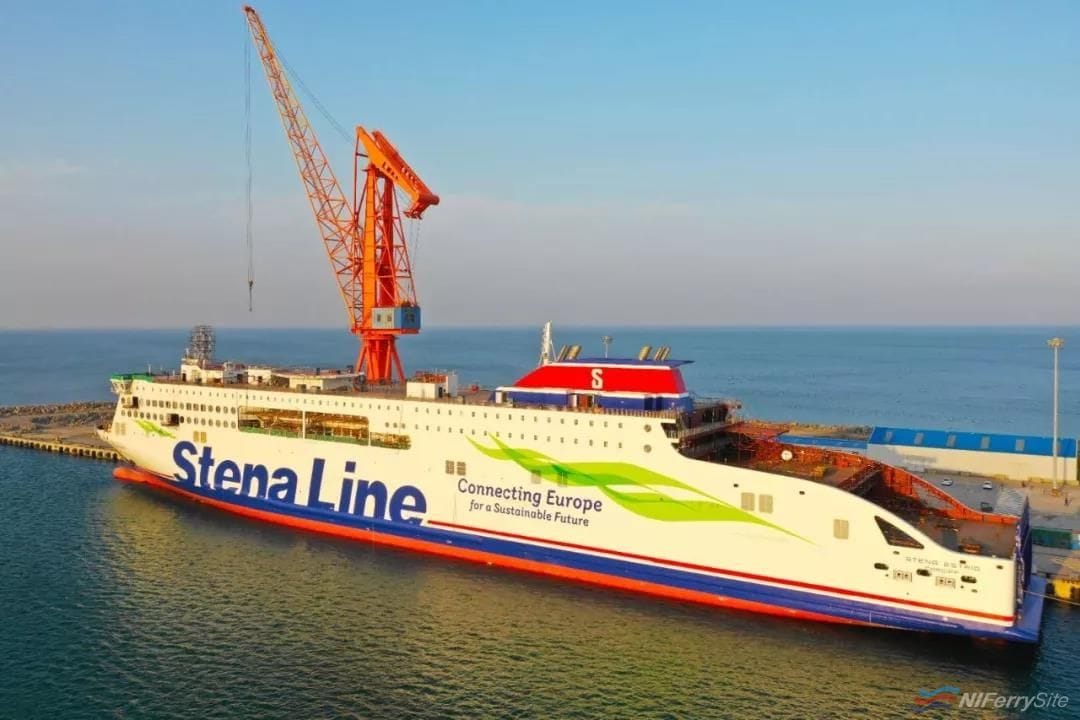
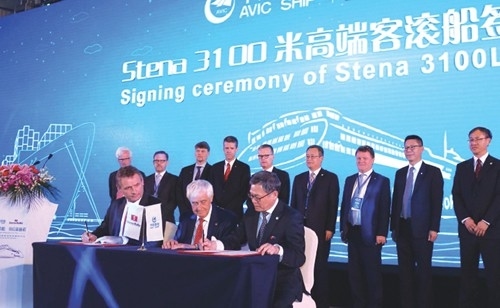
Stena E-Flexer build Gallery

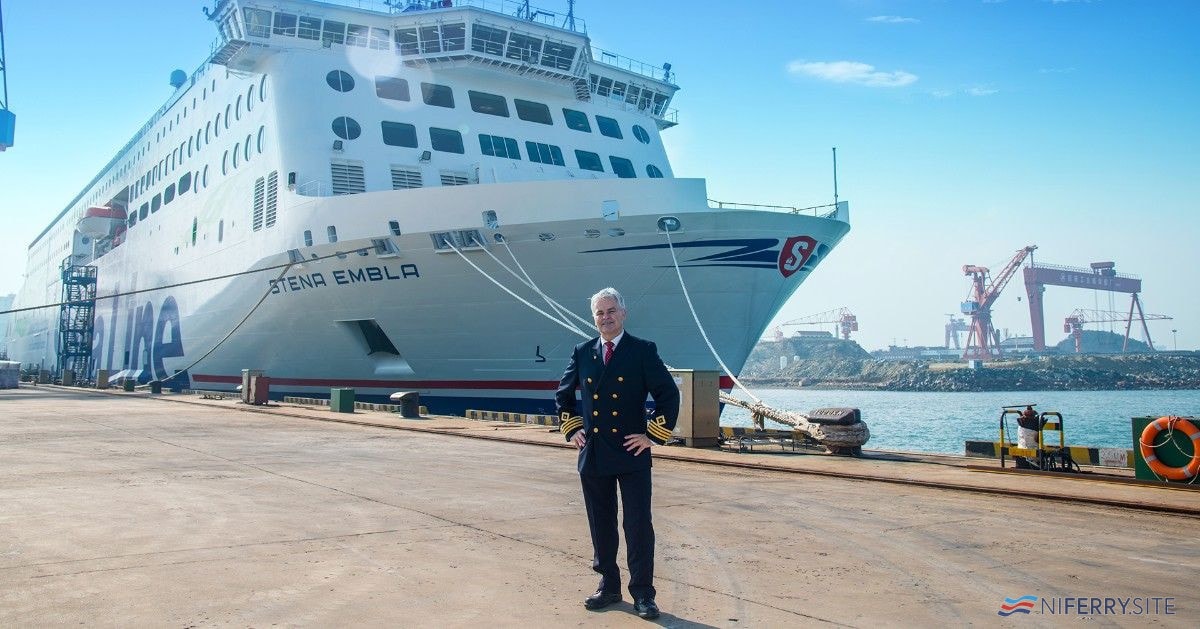

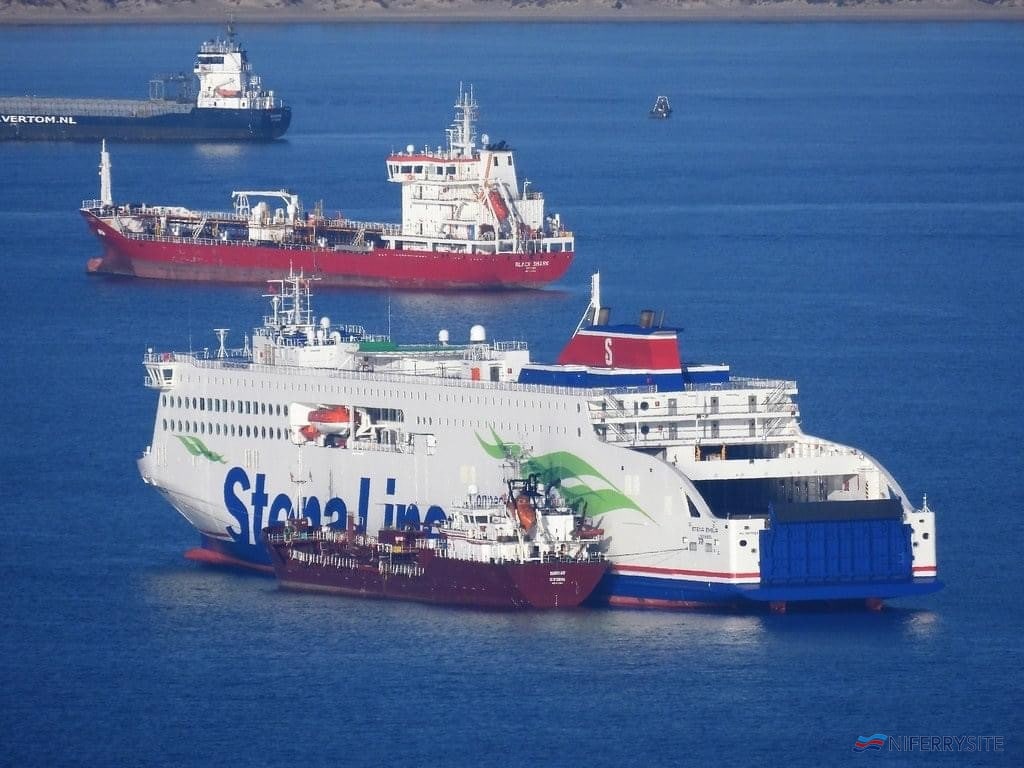


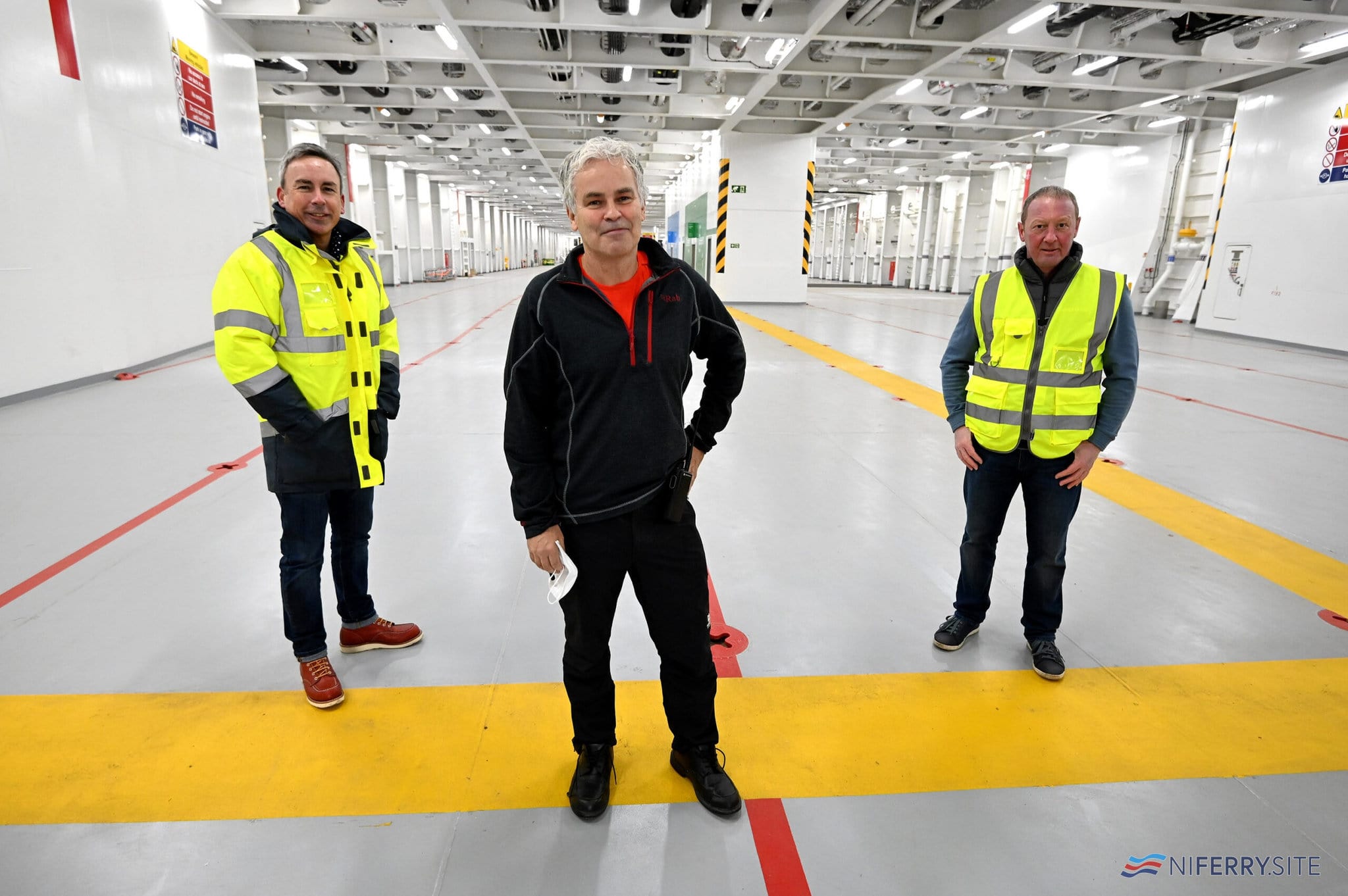






Related articles on NIFery.co.uk
Original Article: 31.05.18 @ 08:15
Last updates 20.08.19 (reformatted tables for mobile)
22.09.19 (added gallery from main E-Flexer article)
02.01.2021 : Added Embla arrival in Belfast



